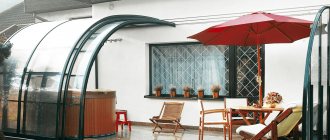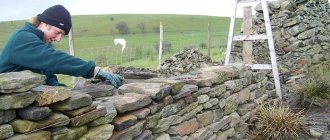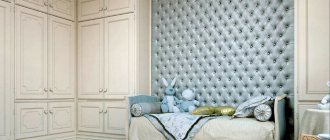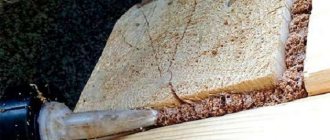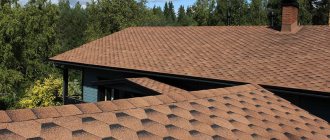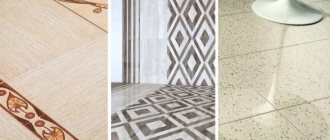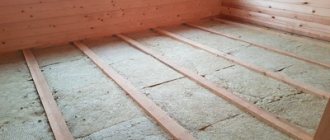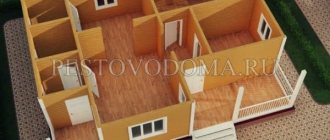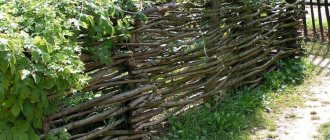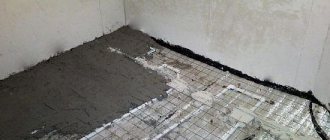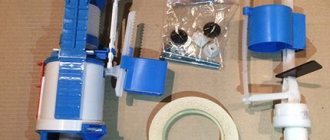Thermoplastic polymer material has long been recognized among summer residents and private sector owners. This is an excellent basis for a greenhouse, gazebo, canopy roof, veranda.
A polycarbonate fence is durable and beautiful. The construction technology is simple, so you can assemble it yourself, and the unique properties of the raw materials and a wide selection of colors allow you to make a masterpiece out of the fence.
Users often search for:
- DIY fence gate
- Euro picket fence
A little about polycarbonate (PCB)
Polycarbonates are a group of thermoplastics (polymer plastics) with different properties. Several formats of this material have become widespread in construction:
- Cellular (cellular) . The material has the form of two- or three-layer sheets with an internal structure forming cells. Plasticity and lightness make it indispensable where bending of the structure is needed, therefore greenhouses, all kinds of canopies and canopies of buildings are made of cellular polycarbonate. Another common variety is interlocking polycarbonate, panels with interlocking fastenings.
- Monolithic (sheet, solid) . It is produced by injection molding, has the form of flat sheets and is characterized by high mechanical strength and durability. It is often chosen as a replacement for fragile and expensive glass. In construction it is used as a translucent material for greenhouses, roofing inserts, and road fencing.
- Profiled . Wave-shaped cast sheets with excellent strength characteristics. Used in the construction of fences, roofs, skylights.
The complex structure makes cellular PCB a versatile material Source 8desk.com
The construction market has long paid attention to polycarbonate materials, which was facilitated by their attractive performance characteristics:
- Light weight . A valuable property for a building material, especially when you consider that the lightness of structures does not affect their strength.
- Low thermal conductivity . The layer of air filling the cells of cellular polycarbonate significantly reduces the material’s ability to conduct heat.
- Optical properties . PCB transmits light as well as glass, but, unlike glass, it has the ability to scatter rays. Natural polycarbonate fades over time and loses transparency, so manufacturers cover the sheets with a film that protects from ultraviolet radiation.
- Durability . In this parameter, PCB is 200-250 times superior to silicate glass, which is why it is widely used in protective glazing. It is known to be resistant to impacts and stationary loads.
- Frost resistance.
- Ease of processing . The material can be cut and drilled without the use of special equipment; bends easily without breaking.
Tinted monolithic PCB has different light transmission coefficients Source kfc.biz.ua
- Operational safety . A destroyed sheet does not form small and sharp fragments like glass. The material has excellent fire resistance.
- Wide range of colors . You can always choose a color that suits your taste and matches the overall design of the site.
The main disadvantage of polycarbonate for fences is its thermal (with temperature changes) expansion, which in summer can reach 2.5 mm/m; this property is taken into account during installation.
Main characteristics
Polycarbonate is a synthetic polymer material produced in the form of sheets (panels) of various lengths from 3 to 12 m. The panel width accepted by the standards is 210 cm. In modern construction, two types of polycarbonate sheets are used:
- Cell phone. Has a cellular structure. The outer plates are connected to each other by straight or X-shaped stiffeners. The length and thickness of the sheet varies depending on the type of material (3-40 mm).
- Monolithic. It is a transparent or translucent homogeneous material of increased strength. Thickness from 1 to 12 mm.
Structured (cellular) polycarbonate sheets are available in a wide variety of color variations, making it easy to choose to implement any design solutions.
Features and types of polycarbonate fences
When planning the construction of a fence, the owner determines its reliability, durability, beauty and speed of construction. Classic fences made of metal, brick, wood or reinforced concrete can meet some wishes at the expense of others, no less important. A modern PCB fence meets the maximum number of requirements for enclosing structures. All the positive qualities of the material are also manifested in fences; The finished design also has additional benefits:
- It does not corrode , has a long service life and is a good noise absorber.
Polycarbonate is not afraid of frost, rain and hail Source picdeer.org
- Quick installation . Turnkey installation, performed by a professional team, will be carried out in compliance with technology and will take a little time.
- Changing perceptions . A fence made of polycarbonate sheets visually increases the size of the site.
- Easy care . It is enough to wash off the dust with water from a hose from time to time.
Fences, the main material of which is polycarbonate sheets, differ in the installation method. Installation of such fences is carried out in several ways:
- On a metal frame (sectional, stacked, welded). Sections are made from profile pipes or angles onto which PCB sheets are attached. Sectional frames weigh little, so they are easy to transport and install, which makes this installation method the most common.
- On brick pillars . The brick-polycarbonate structure is a durable structure with a long service life and impressive appearance. For construction, both cellular and monolithic PCB are used; the only negative is that it will take time for such a fence to decorate the site, since brick pillars require a foundation.
Combined fence on brick pillars Source remoo.ru
- With forging (decorative). The sections are decorated with forged rods, polycarbonate sheets (you can choose transparent or translucent material) are most often mounted on the inside.
See also: Contacts of companies that specialize in the construction of fences and fencing.
Frame assembly
During this time you will have just enough time to assemble the frame. But you should be comforted by the thought that the most labor-intensive and difficult stage of the work is already behind you.
- We will attach polycarbonate sheets to transverse joists, which in turn will be attached to support posts;
- This means that the logs must be welded to the posts;
- At this stage, it is very important to ensure that all the logs are on the same line and keep them horizontal. From a practical point of view, little depends on this, but the flaws will greatly affect the appearance of the structure;
- To make work easier, you need to mark each pillar, or pull a rope from the first pillar to the last;
- Typically, logs are made from steel angles, thick reinforcement or profile pipes;
- After welding, you will still have scale on the surface that needs to be removed;
- Welding areas are most susceptible to corrosion, so they must be covered with paint or other protective compound;
- As a result, you should end up with something similar to this:
Material selection
The choice of polycarbonate depends on what requirements will be placed on the fence during operation; When choosing, pay attention to the following parameters:
- Thickness _ An important indicator that affects the wear resistance of the future fence. The optimal thickness is considered to be 6-10 mm. Such a leaf will look even, without waves, and will withstand winter frosts without problems.
- Soundproofing . Monolithic PCB sheets are better suited for noise protection than cellular PCB sheets.
- UV protection . If sections of the fence will be illuminated by sunlight most of the time, you will need material covered with a protective film.
- Quality . The material you purchase must have a quality certificate. Sometimes manufacturers add additives to the composition, which reduce the cost (and at the same time quality), and make such a PCB unsuitable for the installation of fences. The certificate will become a guarantee against low-quality products.
Thickness options for monolithic PCB sheets Source zemendaily.com
- Quantity . Polycarbonate fences are not cheap, therefore, no matter how structurally simple the fence may be, polycarbonate is purchased after you have calculated the required amount of material. To do this, determine the perimeter of the site, the size of one section and the distance between them.
Concreting pillars and foundations
Installing a fence yourself often involves mixing the concrete mixture yourself. For these purposes, they rent a concrete mixer, stock up on cement, sand, water, crushed stone and someone else’s help. It is not recommended to mix a large amount of solution at once until you get the hang of producing it quickly enough. Immediately prepare for the fact that the trench needs to be filled in one day.
This way you can avoid the formation of expansion joints and various irregularities.
- After mixing the concrete, the mixture is poured from a concrete mixer into buckets and then into a trench;
- Concrete must be laid in such a way that no voids are formed;
- After the foundation is poured, you need to expel the air from it and level the general plane;
- If you are working on a hot day (which is not recommended), be sure to cover the concrete with film and spray it periodically to prevent cracking;
- Concrete will harden for a long time; after 10-15 days it will gain only 50% of its strength. At this time, you can remove the formwork;
- Complete hardening of the composition will occur only after 30 days.
Structural solution for a fence made of PBK
The most common solution is a fence made of PCB mounted on a metal frame. This design has the following features:
- Support elements . The frame can be single or double, welded or bolted; The material is a corner or profile pipe. Sometimes a decorative welded fence is made.
- Step for installing support pillars . The distance is set to 2.2-2.5 m, which is determined by the requirements for the operation of the PBC.
- Size of profile pipes . The cross-section of the posts is selected taking into account the height of the fence; for a structure with a height of 1.5 m, a profile of 40x40 mm is used, up to 2 m - 60x60 mm. A fence 3 m high has increased windage and will require a profile of at least 80x60 mm; it is also necessary to reduce the distance between the pillars to 2 m.
Installation of a cellular PCB on a metal frame Source stroyfora.ru
- Cellular PCB . A material with a UV protective layer with a thickness of 6 to 10 mm is selected (the thickness determines the number of structural layers - 2, 3 or 4). The optimal thickness of the protective layer is 25-30 microns (for material with a thickness of 4-6 mm), and 30-40 microns (if the sheet has a thickness of 8-10 mm).
- Monolithic PBC . Sheets can be transparent (transmit up to 90% of sunlight), translucent (scatter light) or opaque (matte, opaque). There is material with a profiled coating that performs a protective function. Transparent and translucent varieties of PBC with a thickness of 4 to 6 mm are in demand - milky (opal), bronze, silver (metallic), green. Some shades will have to be ordered from the catalogue.
- Fasteners . You will need self-tapping screws, thermal washers, as well as a connecting and detachable profile.
Site preparation process
Once you have decided on the purchase of the necessary materials, you need to prepare the area for future installation.
- Any work on the ground always begins with markings. It is always more convenient to do it on the ground with the help of wooden posts and rope. First, pegs are installed around the perimeter of the rectangle, then the remaining points are added - the beginning and end of the gate and wicket. Then the rope is pulled tight. Now you clearly see the boundaries of the future fence;
- Based on the markings, you need dig a trench along the entire perimeter for the future foundation. The width of the strip foundation can be 30-40 cm, and the depth 40-50 cm;
- In addition, you need to dig holes in the places where the support pillars are installed, at least 100 cm deep;
- A layer of sand and gravel should be poured into the holes and trenches to prevent stagnation of water under the foundation;
- Now you can start construction formwork, which should hold the concrete mixture when pouring. The formwork is made from wooden boards, whose height should exceed the desired height of the future foundation by at least 5 cm;
- After the formwork is ready, reinforcement is performed. Experts recommend installing the reinforced frame so that it does not touch either the bottom or the walls of the trench;
- After this, you need to install the support pillars. In this case, you will need help, because the pillars must be perfectly vertical. The easiest way is to set the first pillar and the last one perfectly level, then stretch the rope between them and align with it.
Installation of PBK fences
Installation of a polycarbonate fence (like any other) can be carried out in several ways, which depends on the personal preferences of the owner, the budget allocated to him and the characteristics of the soil. One of the following methods is used:
- Installation on a strip foundation ; the pillars between sections can be stone or metal.
- Installation of intersection pillars on screw piles.
- Spot concreting of metal pillars.
A polycarbonate fence on a metal frame is installed taking into account the characteristics of the material - significant windage and associated lateral loads. The work is carried out in the following sequence:
- Installation of the supporting structure . The pillars are concreted to a depth of 1-1.2 m. The vertical position of each support is verified using a building level. After pouring the concrete, wait for the mixture to completely harden (up to three weeks).
- Installation of horizontal frame elements (purlins, crossbars). The cross beams are secured by welding or bolts. If necessary, intermediate or decorative parts are installed.
First stage: marking the perimeter of the site
Marking the perimeter is very simple. First, the dimensions of the fence and its corner points are determined. Next, you need to hammer in wooden pegs at the corner points. Then a cord is pulled between them. The next thing you need to do is determine the points at which the supporting profiled pipes will be located.
Note! Experienced experts recommend maintaining a three-meter distance between the centers of the recesses. This step is optimal when building a carbonate fence between neighbors in a country house with your own hands.
Marking
Video description
About fencing a garden plot with a fence made of PCB in the following video:
- Anti-corrosion treatment . In order for a metal structure to serve for a long time, it is protected from corrosion, for which it is treated with sandpaper, primed and painted.
- Preparation of cellular polycarbonate . Before cutting the sheets into pieces of the required size, it is necessary to orient the material in the desired way. Internal structural partitions should be positioned vertically; in this case, condensation will not accumulate inside, but will flow out.
- Workpiece size . The size is calculated in such a way that there are gaps between the ends of the sheet and the frame. Otherwise, the sheets will deform (bend) due to thermal expansion.
Reducing the gap between adjacent sheets with increasing temperature Source buildor.ru
- Sawing . It is carried out at medium speed (if using a power tool) so as not to melt the edge of the PCB.
- Preparing holes in plastic . To prevent the sheet from cracking, the holes are located no closer than 4 cm from the edge. The diameter of the holes is set to be 2-3 mm larger than the size of the screw.
- Fastening PCB sheets . The sheets are attached to prepared sections.
- Installation of gates and gates .
- Features of installing polymer sheets . Cellular polycarbonate, as a rule, has UV protection on only one side; monolithic sheets are produced with both one-sided and double-sided UV protection. Material with one-sided protection is mounted with the protected surface facing the sunny side. If the fence will be constantly illuminated by the sun, it is recommended to use PCB with double protection.
Cutting PCB with an electric jigsaw Source stroyfora.ru
Stage two: installation of support pillars
Installation of supports is carried out according to the markings prepared earlier. You will need to make holes in the ground at the required points. A drill is used for this purpose. The depth of the holes is determined as follows: it is necessary to measure the support column and divide the resulting figure by 3. It is recommended to take into account the territorial features of the site, namely: the composition of the soil and the depth of its freezing.
After this, sand must be poured into the bottom of each recess. The thickness of the sand cushion is 10-15 cm. Next, the support pipes are directly installed. To securely fix the pillars, crushed stone, fragments of brick, and other building materials are used. Pouring concrete is carried out only in good weather conditions.
Important! Bitumen is used to protect the underground parts of the supports from moisture. When installing supports, you must use a level. This will avoid unwanted distortions in the structure.
You might be interested in: How to build a gazebo at your dacha with your own hands
Fences made from PBK to order
Many companies are engaged in the construction of PBK fencing of any complexity. Ordering a fence with installation is beneficial for many reasons:
- Quality . Construction specialists have many years of experience and proven technology. The work is carried out quickly, accurately and responsibly.
- Reasonable prices . Raw materials are purchased in large quantities from large manufacturers, which means maximum discounts and has a positive effect on the final price. Some companies have their own PCB production.
- Individual approach . Most organizations offer a free specialist visit to the site. This option is convenient for those who value their time.
- Stability of construction conditions . An agreement is concluded with the customer, fixing the installation time and the unchanged price.
- Guarantee . The customer is provided with warranty (and often post-warranty) service for work and materials.
Why is polycarbonate so good?
It is a thermoplastic polymer with optical transparency and high strength. It can replace ordinary glass, but at the same time has flexibility and good impact strength. Polycarbonate sheets of different thicknesses, which are produced by extrusion, are widely used.
There are 2 main types:
- Monolithic. It looks like a solid panel without internal voids. It perfectly absorbs ultraviolet rays, and is considered the most durable of all transparent materials. The service life of products made from it exceeds 15 years.
- Cell phone. This type of material takes the form of transparent or matte panels made of 2 or several layers, between which jumpers (stiffeners) are laid. As a result, this design resembles a honeycomb, which gave rise to the indicated name for the material. The air inside the panels between the jumpers provides thermal insulation properties, and the stiffeners themselves provide increased strength. This type of polycarbonate is stiffer than monolithic sheets, but it can also be freely bent when cold. The thickness of a standard sheet is in the range of 5-30 mm.
Cost of fence from PCB
The cost of a polycarbonate fence on a metal frame is influenced by the following factors:
- The size of the area to be fenced.
- Fence parameters : height, distance between supports, need for a gate or wicket, installation of decorative parts.
- Method of installing support pillars . Depends on the type of soil and wind load in the area. Installation is carried out by concreting, driving or butting (tamping with crushed stone).
- Cost of polycarbonate . The cost of sheet PCB is determined by the thickness and technical characteristics of the raw materials. The cost of a cellular PCB depends on whether it has UV protection (without it, the material will turn yellow and become brittle after 4-5 years). A fence made of protected polycarbonate will retain its original characteristics for 18-20 years (subject to proper installation).
Such a fence cannot do without UV protection Source ragumy.misatuvyro.ru.net
The final cost can be determined after the site has been inspected and measured. Prices for a solid fence start from 1350-1450 rubles. /P. m (at a height of 1.5 m), from 1650-1850 rubles. /P. m (at a height of 1.8 m), from 1800-2150 rubles. /P. m (at a height of 2 m). Prices for fencing in sections will be (respectively): from 2700 , from 2900 and from 3350 rubles. /P. m.
Pros and cons of the material
Photo: combination of forging and polycarbonate sheets in a fence
Important advantages of using polycarbonate sheets for a fence:
- Transparency. Reaches 90% depending on the color of the material, but at the same time what is happening on the estate will not be accessible to outsiders. Good light transmission allows you to plant plants and shrubs near the fence.
- Ease. The cellular PCB is lightweight, so it is easy to install.
- Strength. Monolithic sheets are not inferior in strength to corrugated sheets, but are quite thick and superior to them.
- Excellent flexibility. The sheets easily take on any geometric shape, so you can make a unique fence.
- The polymer material is resistant to environmental influences, does not burn or rot.
- It provides good sound insulation, which is important for owners of houses located near highways.
- It has a protective coating against ultraviolet radiation and does not fade in the sun.
- Retains technical characteristics over a temperature range from -40 to +120 degrees Celsius.
- Does not require periodic maintenance. Contaminants are removed by water pressure.
- You can do the entire amount of work yourself.
- Transparent sheets do not obscure the neighboring area.
- Large selection of colors and shapes.
- This fence looks beautiful.
- It's inexpensive.
Easy to process.
The construction of a polycarbonate fence does not take much time. And in combination with a metal frame and forged elements, the structure will decorate the site.
Disadvantages of the material:
- With constant heating, it can expand, which often leads to cracks in the fastening areas with the frame.
- If the sheets do not have a protective coating against ultraviolet radiation, then gradually the color begins to fade and the material crumbles.
- A combined version of a fence with forging and brick pillars requires pouring a solid foundation, which entails additional costs.
It is recommended to build the fence from separate sections - this makes it easier to install and will last longer.
